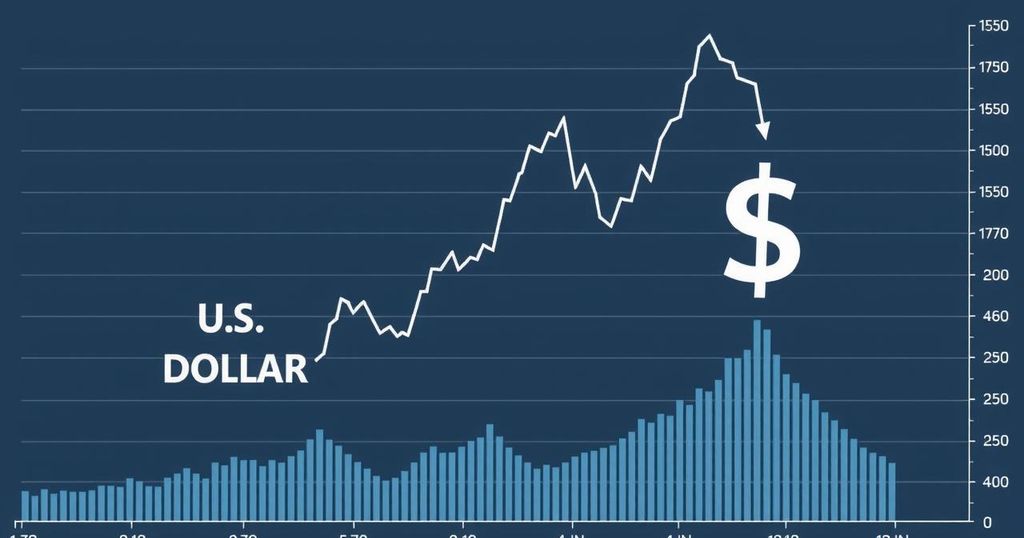The Tanzanian shilling has depreciated from a strong position against the US dollar in late 2024, influenced by rising import demands and disruptions in agriculture and mining. Analysts suggest that while this fluctuation may be temporary, it highlights significant economic pressures, including reduced exports and the impact on inflation.
The Tanzanian shilling has recently experienced a depreciation against the US dollar, following a brief period of appreciation noted throughout December 2024. On October 4, 2024, the Bank of Tanzania (BoT) reported the shilling trading at Sh2,721.68. By December 10, 2024, it had strengthened to Sh2,513.1169, ultimately closing the year at a rate of Sh2,394.7558, yet started to decline again, ending January 2025 at Sh2,486.6387 and February 2025 at Sh2,581.2878. On a recent Thursday, it further weakened to Sh2,611.786.
The BoT attributes this depreciation to several crucial factors, particularly the rising demand for US dollars, stimulated by increased imports in anticipation of the holy month of Ramadan and the Chinese New Year. BoT Governor Emmanuel Tutuba indicated that the continued rise in fuel imports and disruption in small-scale mining operations due to landslides are contributing to economic challenges. The agricultural sector is facing a dip in sales, which typically supplements the foreign currency inflow, compounded by the low tourist season.
Independent financial analyst Oscar Mkude remarked that the shilling’s decline against the dollar is a cyclical trend likely to last merely a few days before stabilization occurs. He emphasized the expectation of short-term fluctuations within currency demand, cautioning that an extended downturn would be concerning.
Professor Dickson Pastory from the College of Business Education identified a significant reduction in exports, notably in minerals and agricultural sectors, which have historically been vital for foreign exchange. This decline, alongside the heightened demand for imports, leads to a currency supply imbalance. He highlighted that with limited exports and foreign investments combined with a strengthening of the US dollar globally, conditions worsen.
The ongoing depreciation of the shilling is expected to have a ripple effect across the economy, directly impacting rising fuel import costs, which may consequently elevate transportation expenses and inflation. The cost of imported commodities, impacting both businesses and consumers, is also poised to increase. Analyst Christopher Makombe noted that the shilling’s value drop to 2,640 against the dollar during the first quarter corresponds with historical patterns of increased foreign currency demand post-holiday season, coupled with decreased foreign exchange inflows from tourism and agriculture.
In summary, the Tanzanian shilling has begun to lose ground against the US dollar following a brief period of strength. This depreciation can be attributed to increased demand for dollars caused by rising imports and disruptions in critical sectors like agriculture. Analysts remain cautiously optimistic, suggesting that this trend may only be temporary, although ongoing challenges such as reduced exports and economic pressures persist, affecting the overall financial landscape.
Original Source: www.thecitizen.co.tz




